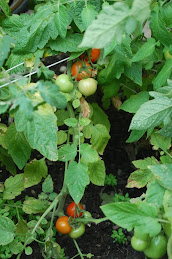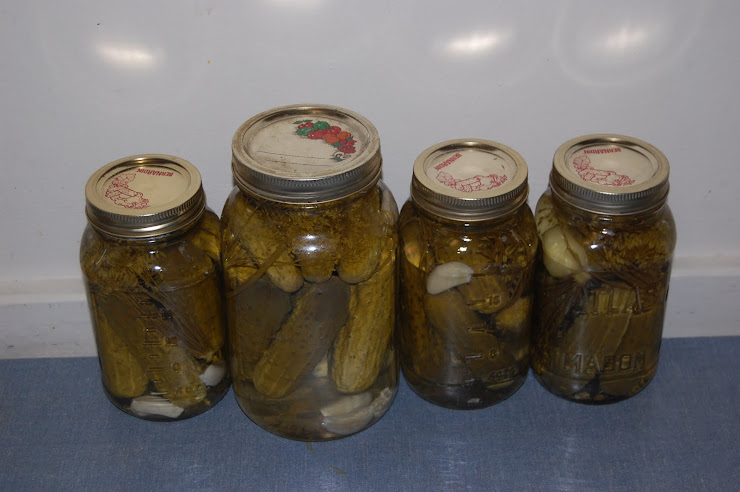


...and the farm cats are happy to become house cats again.


Adventures in growing and preserving my own food!

 We started with peaches- I wasn't able to pick any myself this year but at our local Farmer's Market I was able to get peaches from Two Century Farm who are near Grimsby, not far from where I spent last weekend. Two Century is so named because the land has been farmed by the same family since 1788! Beginning with John Smith who arrived from the US in 1787, right up to Duncan Smith the current owner, the Smith family has been farming that land for over 200 years. I wonder if they are related to Henry ( Smith) of Pelham and if they followed the black walnut trail as well?( see previous post).
We started with peaches- I wasn't able to pick any myself this year but at our local Farmer's Market I was able to get peaches from Two Century Farm who are near Grimsby, not far from where I spent last weekend. Two Century is so named because the land has been farmed by the same family since 1788! Beginning with John Smith who arrived from the US in 1787, right up to Duncan Smith the current owner, the Smith family has been farming that land for over 200 years. I wonder if they are related to Henry ( Smith) of Pelham and if they followed the black walnut trail as well?( see previous post). We wanted a spicy jam so we used hot peppers that I grew on the roof- a mix of red and green jalapenos and one golden habanero. We charred the peppers over a flame to remove the skins and intensify the flavours; another time I'd love to try smoking them instead.
We wanted a spicy jam so we used hot peppers that I grew on the roof- a mix of red and green jalapenos and one golden habanero. We charred the peppers over a flame to remove the skins and intensify the flavours; another time I'd love to try smoking them instead. For sweetener we used the last of the maple syrup we made back in March using sap from Colette's maple tree see . And for pectin we used the apple pectin I made earlier this summer from green apples, thanks to Tigress for the directions! We made just a small batch as a tester and we're pretty pleased with the results!
For sweetener we used the last of the maple syrup we made back in March using sap from Colette's maple tree see . And for pectin we used the apple pectin I made earlier this summer from green apples, thanks to Tigress for the directions! We made just a small batch as a tester and we're pretty pleased with the results! med- low heat until soft. Use a potato masher or immersion blender to mash peaches until blended. Add maple syrup and cook mixture on low for 5 -10 minutes until well blended and starting to thicken. Turn heat to high and add lemon juice and pectin. Bring to a boil and boil for one minute. Pour in sterilized jars and process for 10 minutes in a hot water bath.
med- low heat until soft. Use a potato masher or immersion blender to mash peaches until blended. Add maple syrup and cook mixture on low for 5 -10 minutes until well blended and starting to thicken. Turn heat to high and add lemon juice and pectin. Bring to a boil and boil for one minute. Pour in sterilized jars and process for 10 minutes in a hot water bath. This past weekend I volunteered with the Tour de Green Belt, a biking and local food adventure tour through the greenbelt of Ontario. There are 4 different tours showcasing different regions- two were held in the Niagara/St Catharine's area this past weekend. The Niagara region is mainly known for vineyards and orchards so it was fitting that our home base was Henry of Pelham's. My original plan was to ride one of the tours but somehow I didn't get organized to bring my bike so I spent both days helping out at main event. Which worked out fantastic as I found plenty to see and do without ever leaving the winery!
This past weekend I volunteered with the Tour de Green Belt, a biking and local food adventure tour through the greenbelt of Ontario. There are 4 different tours showcasing different regions- two were held in the Niagara/St Catharine's area this past weekend. The Niagara region is mainly known for vineyards and orchards so it was fitting that our home base was Henry of Pelham's. My original plan was to ride one of the tours but somehow I didn't get organized to bring my bike so I spent both days helping out at main event. Which worked out fantastic as I found plenty to see and do without ever leaving the winery! Henry of Pelham Estates is currently owned and operated by three brothers, Matthew, Paul and Daniel Speck. Their father Paul Speck was a descendant of the original settlers of the property, Nathaniel Smith and family who were awarded the deed to the land in 1794. Henry Smith, the youngest of the 7 sons used his portion of the property to build an inn and tavern which operated under many names until the existing buildings were purchased by the Speck family in the mid 1980's. The Smith family burial plot is still located on the property and
Henry of Pelham Estates is currently owned and operated by three brothers, Matthew, Paul and Daniel Speck. Their father Paul Speck was a descendant of the original settlers of the property, Nathaniel Smith and family who were awarded the deed to the land in 1794. Henry Smith, the youngest of the 7 sons used his portion of the property to build an inn and tavern which operated under many names until the existing buildings were purchased by the Speck family in the mid 1980's. The Smith family burial plot is still located on the property and  now carefully preserved as a monument to Loyalist settlers. There's even a plaque commemorating Nathaniel's history as a member of Butler's Rangers, who fought on the side of the British in the American Revolution.
now carefully preserved as a monument to Loyalist settlers. There's even a plaque commemorating Nathaniel's history as a member of Butler's Rangers, who fought on the side of the British in the American Revolution. number of ancient fruit trees; in the midst of these I was surprised to find an English walnut tree! From Daniel, the youngest of the Speck brothers, I learned that this particular tree had been planted in memory of their father who passed away in 1992. It's now a full sized tree producing buckets of walnuts which Daniel graciously allowed me to pick!
number of ancient fruit trees; in the midst of these I was surprised to find an English walnut tree! From Daniel, the youngest of the Speck brothers, I learned that this particular tree had been planted in memory of their father who passed away in 1992. It's now a full sized tree producing buckets of walnuts which Daniel graciously allowed me to pick!The pioneers followed the "Trail of the Black Walnut" which clearly stand out in the fall when leaves have been dropped and its fruit is clearly exposed . It indicated a deep, rich, moisture-holding soil, light enough to be easily penetrated by its taproot and hence easily tilled by the would-be farmer. The trunks of such trees have good lumber. It became the source of the well-known furniture industry of the region.
 sults: wine for the parents, grape
sults: wine for the parents, grape juice for the kids! We saw the weather station and learned how technology helps them produce the best crops without harming the environment. The vines are not irrigated so they are dependent on the water table; Daniel described how they are using old school methods like weeping tiles and layers of wood chips to help clean the water of excess phosphates. They've also invested in and designed netting that protects their grapes from being nibbled on, but still allows local wildlife to use the vineyards as corridors between the wooded areas that surround the fields. It's easy to see why Henry of Pelham was the first vineyard in Ontario to be Local Food Plus (LFP) certified.
juice for the kids! We saw the weather station and learned how technology helps them produce the best crops without harming the environment. The vines are not irrigated so they are dependent on the water table; Daniel described how they are using old school methods like weeping tiles and layers of wood chips to help clean the water of excess phosphates. They've also invested in and designed netting that protects their grapes from being nibbled on, but still allows local wildlife to use the vineyards as corridors between the wooded areas that surround the fields. It's easy to see why Henry of Pelham was the first vineyard in Ontario to be Local Food Plus (LFP) certified.
 Back at the main camp, participants were treated to a barbecue lunch featuring local produce- amazingly sweet bi colour corn ( bushels of which were shucked by the volunteers), a delicious pasta salad loaded with local veggies, and from the grill, hot dogs and burgers topped with local onions, lettuce and field tomatoes. For dessert there were baskets of fresh from the tree pears,
Back at the main camp, participants were treated to a barbecue lunch featuring local produce- amazingly sweet bi colour corn ( bushels of which were shucked by the volunteers), a delicious pasta salad loaded with local veggies, and from the grill, hot dogs and burgers topped with local onions, lettuce and field tomatoes. For dessert there were baskets of fresh from the tree pears, apples and peaches. There was even a farmer's market where you could buy Coronation grapes, more juicy peaches, and nine varieties of apples including some you won't find at the supermarket like Golden Ginger and Paula Red.
apples and peaches. There was even a farmer's market where you could buy Coronation grapes, more juicy peaches, and nine varieties of apples including some you won't find at the supermarket like Golden Ginger and Paula Red. I was able to pick about two dozen staining my hands in the process. I brought them home along with the English walnuts and a bottle of Cabernet-Baco from the wine store on site. The walnuts will quickly get eaten and used in preserves, the wine will likely be sipped over a meal sooner than later but the memories of two days in the Niagara fields will stay with me for a long while.
I was able to pick about two dozen staining my hands in the process. I brought them home along with the English walnuts and a bottle of Cabernet-Baco from the wine store on site. The walnuts will quickly get eaten and used in preserves, the wine will likely be sipped over a meal sooner than later but the memories of two days in the Niagara fields will stay with me for a long while.For info on upcoming Tour de Greenbelt events, check out:I'll be there, this time with my pretty pink bike !
http://www.tourdegreenbelt.ca/September 25th in York Region
September 26th in Durham Region


.jpg)


